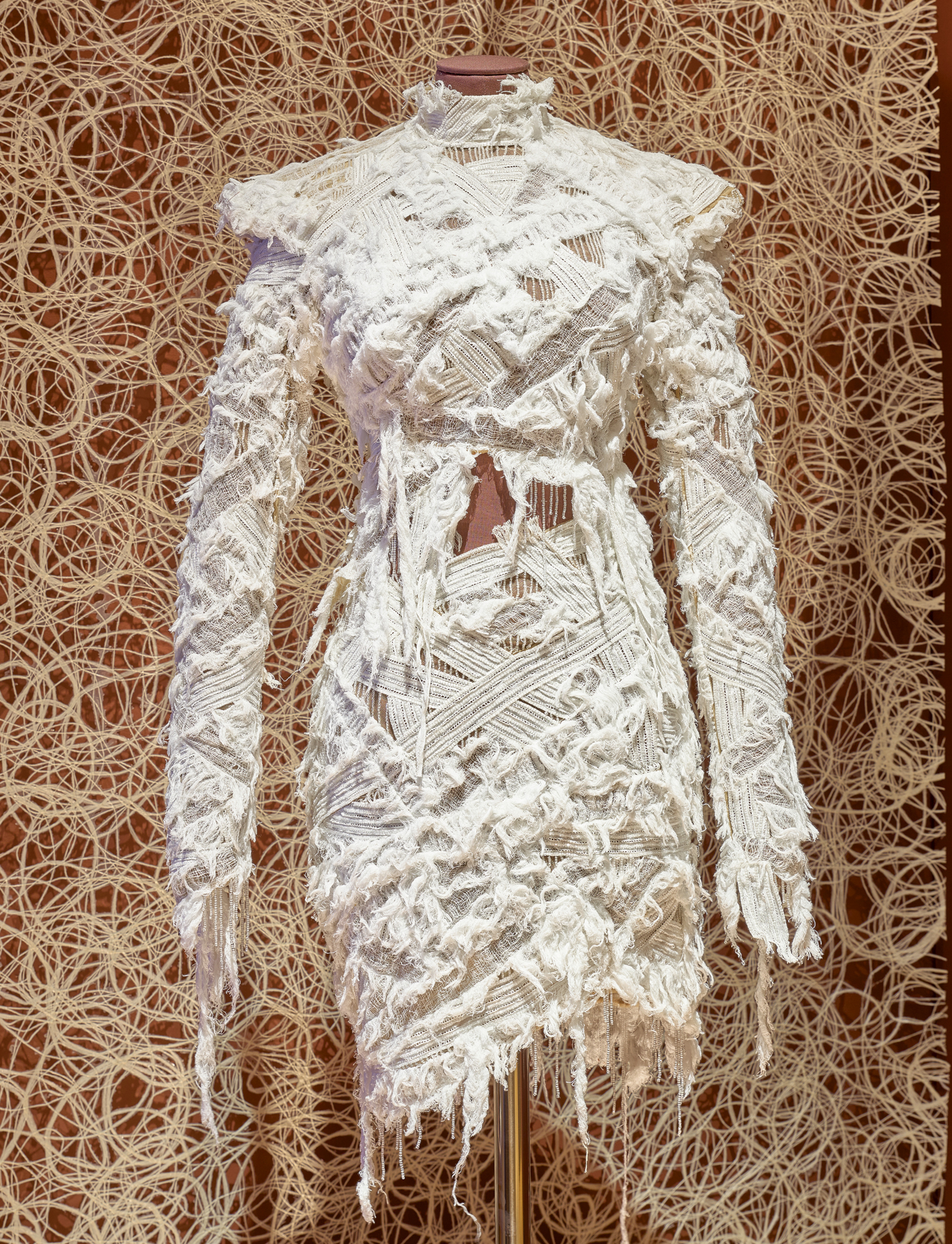
Tags for: Egyptomania
- Magazine Article
- Exhibitions
Egyptomania
Fashion and the funeral
Darnell-Jamal Lisby, Assistant Curator of Fashion
June 1, 2023
Appears in Cleveland Art, 2023, Issue 2

Since the 1800s, Egyptomania—the fascination with ancient Egyptian culture most often expressed in art and architecture—has also permeated fashion. The discovery of Pharaoh Tutankhamun’s tomb in 1922 led to Egyptian-influenced creations in couture fashions and luxury accessories over the following two decades. That period laid the foundation for the plethora of contemporary collections by fashion houses, such as Balmain and Dior, that have been inspired by ancient Egyptian art and artifacts. A number of these contemporary designs are on view now in Egyptomania: Fashion’s Conflicted Obsession.
Curiously, ancient Egyptian funeral practices have been a primary influence on Egyptomania in fashion history. Why? Because fashion creatives often looked to scholarly Egyptological research, a large portion of which is grounded in the study of funerary objects and tombs. Mummification was one of the most significant practices in ancient Egyptian culture: it celebrated the lives of the deceased and prepared them for their journey in the afterlife, or Duat. This journey subjected them to a series of trials that culminated in their sentencing in the Hall of Judgment. There, the hearts of the deceased, the only organ left in the body during the mummification process, were weighed to determine the purity of their lives.
Egyptomania includes contemporary fashions and accessories that demonstrate how fashion houses borrowed from the objects used in mummification, such as linen to wrap the bodies, coffins, canopic jars, and amulets. In the textile gallery are two fashions by Olivier Rousteing for the Balmain spring 2019 collection. He designed this collection on the heels of having produced several ancient Egyptian–inspired costumes for Beyoncé’s 2018 Coachella performance. Importantly, Rousteing is based in Paris, home of the Louvre Museum. The Louvre possesses one of the largest ancient Egyptian collections outside of Egypt, mainly due to Napoleon’s campaigns in the region from 1798 to 1801 and the study of Egypt in the following centuries.
Image

One of Rousteing’s designs for the spring 2019 Balmain collection, an ensemble composed of a top and a skirt, incorporates distressed gauze to create a silhouette, abstractly interpreting the tattered nature in which most mummified, linen-wrapped bodies are found because of natural decomposition. Essentially, Rousteing balanced fashion with function, using gauze as a decorative element and simultaneously as the physical framework of the design.
To help tease out the connection between the visual appearance of ancient mummy linen and Rousteing’s design, a mummy linen produced during the New Kingdom period from the Cleveland Museum of Art’s Egyptian collection is shown next to the ensemble. Linen, which is made from flax, was an essential textile in ancient Egyptian life from birth to death. Flax was harvested at various points of the year, depending on its desired end use. When the flax was a yellow color, it was strong enough to be transformed into linen. After harvesting, the flax went through several combing and soaking techniques and was beaten to create thread, which was spun and woven into the final sheet of linen. Every ancient Egyptian—whether aristocratic or working class—wore linen and was buried in it.
Another source of inspiration for contemporary designers has been the Nemes headpiece, found on depictions of pharaohs in monuments and on two-dimensional illustrations of their likenesses, as well as on their funerary masks. Although technically not considered crowns, Nemes are seen only on depictions of pharaohs. The headpiece has three sides, with two decorative flaps that hang in front on each side of the face. The third side is tied and hangs at the back of the head. In life, Nemes were made from striped or crimped linen, hence their striped depictions in art. Most famously, Pharoah Tut’s death mask vividly depicts the Nemes headpiece as stripes of gold contrasted with blue mineral lapis lazuli.
On the front above the forehead region of the headpiece, in life and art, was a uraeus, or cobra, representing the goddess Wadjet, a protective deity of pharaohs. The Nemes on Tut’s death mask includes a vulture next to the cobra, signifying the goddess Nekhbet, another protective deity of pharaohs. In Egyptomania is the Statue of Amenemhat III, a pharaoh during dynasty 12 of the Middle Kingdom of ancient Egypt. He is shown wearing a Nemes; the head of the cobra at the top is missing, but the tail is intact.
Image

In this exhibition, two outfits reflect the Nemes’s influence. Glistening opposite the white Balmain ensemble is a black, sequin-embroidered Balmain dress with polyamide piping triangularly extending from its sleeves, echoing the Nemes silhouette. The second outfit is the golden crepe and tulle Cyra gown by Egyptian-born, Dubai-based designer Yasmine Yeya for her eponymous label Maison Yeya. The garment has a cape with a striped pattern, alluding to the striped essence of the Nemes. All things considered, the Nemes is a highly accessible way for designers to connect their ancient Egyptian inspiration to general audiences.
Image

These examples are only a few of many that illuminate how ancient Egyptian funerary objects and processes have led to dynamic fashion designs that challenge the imagination while celebrating a culture that is the bedrock of many societies across history and today. We welcome you to Egyptomania: Fashion’s Conflicted Obsession to make those connections and contemplate the legacy of ancient Egypt through fashion.